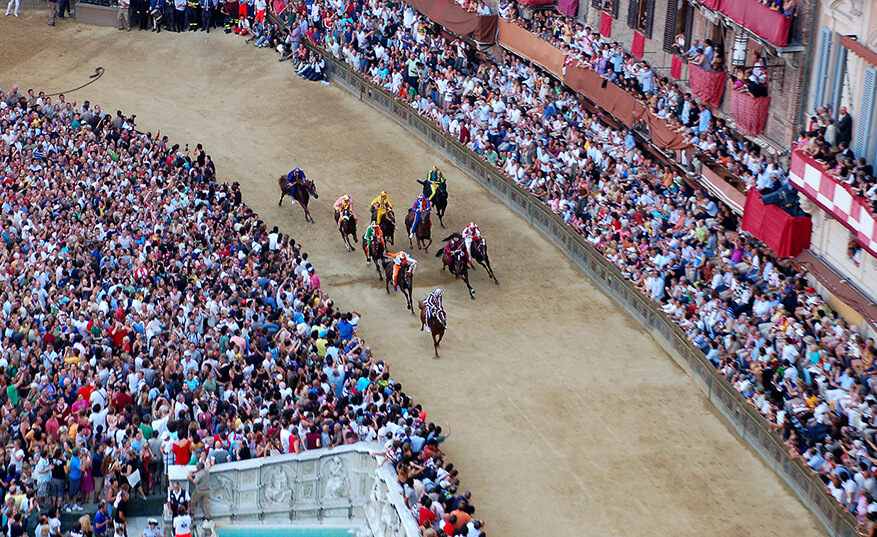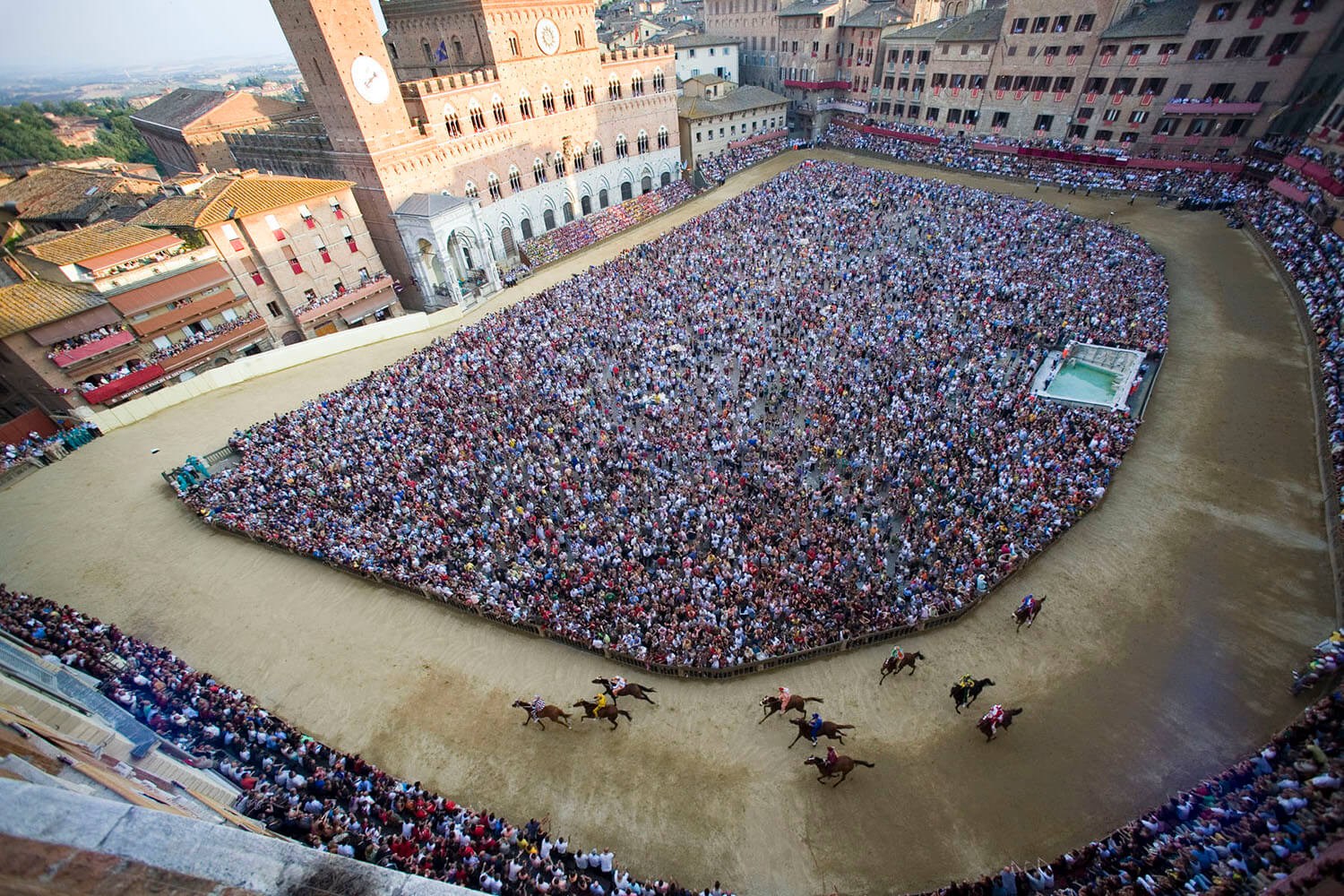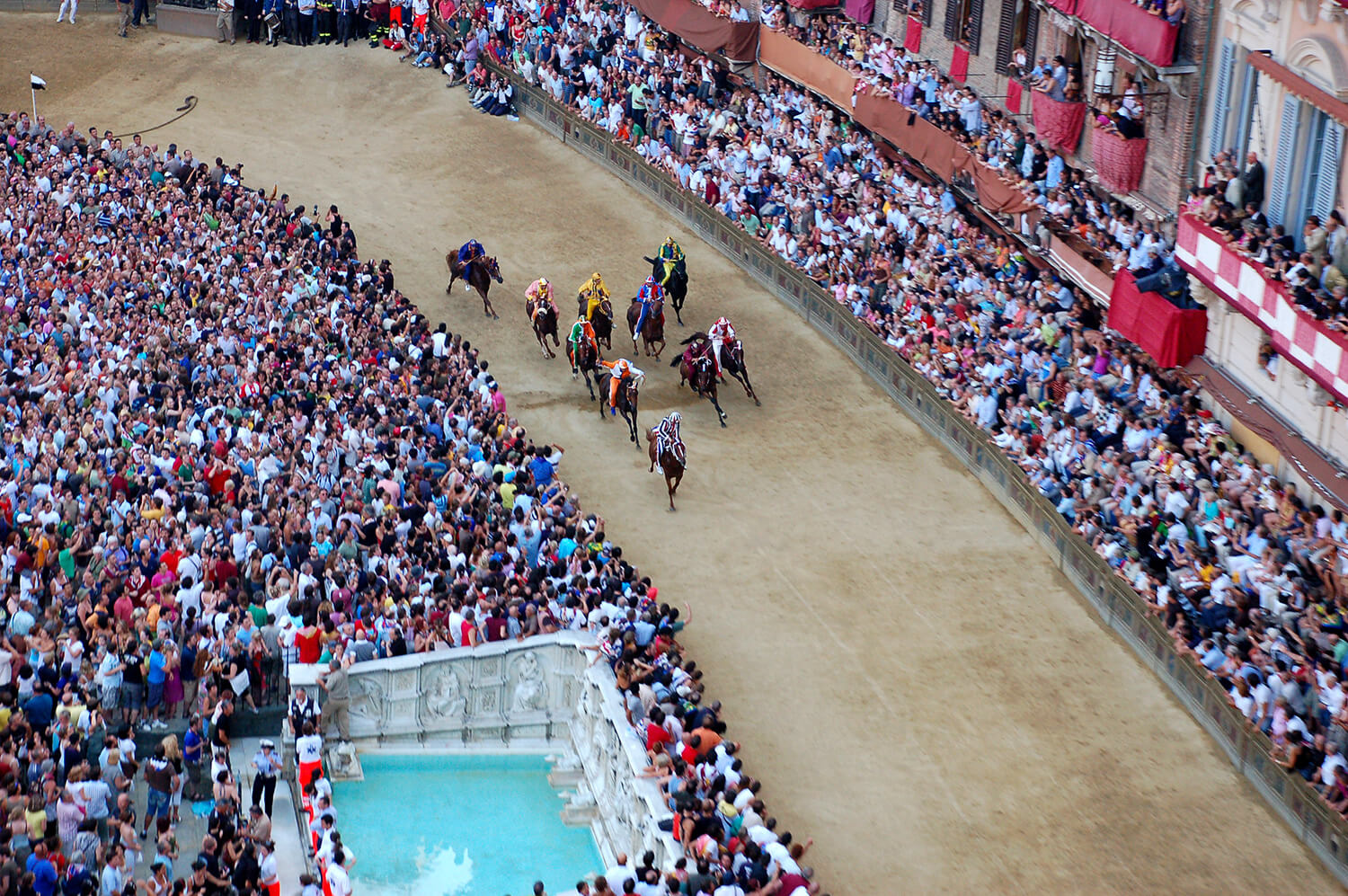Like every summer, Siena is in the spotlight for an ancient tradition that has taken place, almost continuously since 1644. Of course, we are talking about the Palio di Siena, that on 2 July (Palio di Provenzano) and 16 August (Palio dell’Assunta) will attract thousands of people in Piazza del Campo on the occasion of this famous horse race. The Jockeys will represent the various contrade, 17 in total, listed here in strict alphabetical order: Aquila, Bruco, Chiocciola, Civetta, Drago, Giraffa, Istrice, Leocorno, Lupa, Nicchio, Oca, Onda, Pantera, Selva, Tartuca, Torre and Montone.
The appeal of the Palio is that it is extremely exciting both for the citizens who were born and live in the contrade, and for the tourists who are immediately spellbound by the pleasant atmosphere of celebration and competition when they visit Siena.
Not all contrade participate in each edition of the Palio as it is reserved only for 10 horses. The usual rule is that the participants will be the 7 contrade excluded from the previous Palio, plus another 3 chosen in a draw on the last Sunday of May, or the first Sunday after July’s race.
Before each edition of the Palio, there are always four days of events, historical re-enactments, parades and processions.
The race starts at 7.30pm in July and at 7pm in August, but there is often some waiting before the start. The start of the race, known as the mossa, consists of complex phases: first the order of entry of all horses is randomly drawn; the tenth one, unlike the others, can start at gallop speed. The race involves three complete laps of Piazza del Campo for a total length of 1000 metres. Each contrada can select their own jockeys, but the assignment of the horses is made during the so-called tratta, another draw that is held three days before the race. The winner of the Palio can also be a scosso, that is, a horse without a rider if its jockey has fallen during the race. To get a privileged spot to watch the Palio, it is necessary to contact one of the so-called palcaioli; they are the owners of houses, terraces and hotels which offer a direct view of Piazza del Campo.





